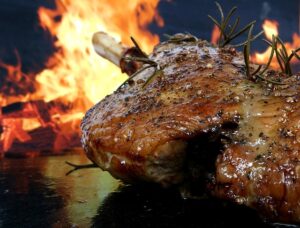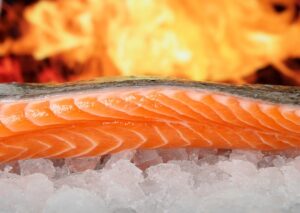Introduction
Proteins are essential molecules that perform various functions in living organisms. They are involved in processes such as cell structure, signaling, and enzyme activity. One of the remarkable aspects of proteins is their diverse shapes, which are crucial for their proper functioning. The shape of a protein is determined by its amino acid sequence and the interactions between different parts of the molecule. Understanding what determines the shape of a protein is fundamental to unraveling its structure and function.
Amino Acid Sequence
The primary factor that determines the shape of a protein is its amino acid sequence. Proteins are made up of long chains of amino acids, which are the building blocks of proteins. The sequence of amino acids in a protein is encoded by the genetic information in DNA. Each amino acid has its own unique properties, such as size, charge, and hydrophobicity. These properties influence how the amino acids interact with each other and ultimately determine the protein’s shape.
Folding and Conformation
Once a protein is synthesized, it undergoes a process called folding, where it adopts a specific three-dimensional shape. The folding process is driven by the interactions between the amino acids in the protein chain. These interactions can be broadly categorized into four types: hydrogen bonds, hydrophobic interactions, electrostatic interactions, and disulfide bonds.
Hydrogen bonds: Hydrogen bonds form between the hydrogen atom of one amino acid and the oxygen or nitrogen atom of another amino acid. These bonds are relatively weak but play a crucial role in stabilizing the protein’s structure.
Hydrophobic interactions: Hydrophobic interactions occur between nonpolar amino acids. In an aqueous environment, hydrophobic amino acids tend to cluster together to minimize their contact with water. This clustering contributes to the protein’s overall shape.
Electrostatic interactions: Electrostatic interactions involve the attraction or repulsion between charged amino acids. Positively charged amino acids are attracted to negatively charged amino acids, while like charges repel each other. These interactions help determine the protein’s overall structure.
Disulfide bonds: Disulfide bonds are covalent bonds that form between two cysteine amino acids. These bonds are relatively strong and can greatly stabilize the protein’s structure.
The combination of these interactions determines the protein’s folding pattern, also known as its conformation. The conformation is critical for the protein to carry out its specific function.
Chaperones and Protein Folding
Protein folding is a complex process, and sometimes proteins need assistance to fold correctly. Chaperones are specialized proteins that help other proteins fold into their proper shape. Chaperones prevent proteins from aggregating or misfolding, which can lead to diseases such as Alzheimer’s and Parkinson’s. They provide a controlled environment for the folding process and help proteins reach their native conformation.
External Factors
In addition to the amino acid sequence and folding process, external factors can also influence the shape of a protein. These factors include temperature, pH, and the presence of certain molecules. Changes in these external conditions can disrupt the interactions that stabilize the protein’s structure, leading to denaturation or unfolding of the protein.
Conclusion
The shape of a protein is determined by its amino acid sequence and the interactions between different parts of the molecule. The amino acid sequence encodes the information necessary for the protein to fold into its native conformation. The folding process is driven by various interactions, such as hydrogen bonds, hydrophobic interactions, electrostatic interactions, and disulfide bonds. Chaperones assist in the folding process, ensuring proteins reach their proper shape. External factors, such as temperature and pH, can also influence protein shape. Understanding the factors that determine protein shape is crucial for studying their structure and function.
References
– Alberts, B., Johnson, A., Lewis, J., Raff, M., Roberts, K., & Walter, P. (2002). Molecular Biology of the Cell. Garland Science.
– Berg, J. M., Tymoczko, J. L., & Gatto, G. J. (2015). Stryer’s Biochemistry. W.H. Freeman and Company.













